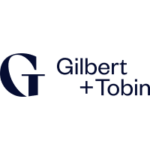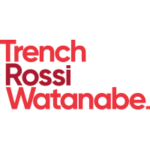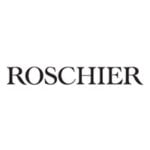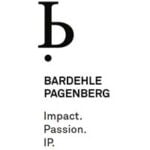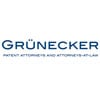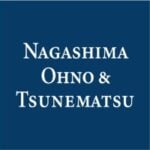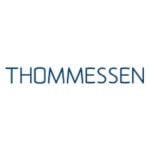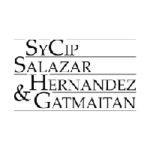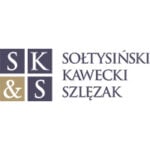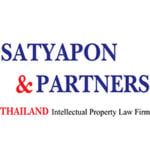-
What is the forum for the conduct of patent litigation?
In responding to this question, please include details of the relevant division/chamber/section of the relevant courts/tribunals, and consider whether these fora have specialist patents/technical judges, whether parties are faced with a potential choice of different courts/tribunals, and if so, the advantages and disadvantages of each such choice.
Patent litigation in Mexico is taken before the Mexican Institute of Industrial Property (in the foregoing IMPI). IMPI has enough authority for ruling on infringement and invalidity cases regarding patent cases and also for awarding damages in separate proceeding, once infringement decision is final and beyond shadow of appeal. IMPI has also all the technical people and patent specialist needed to resolve the cases.
Final decisions of IMPI for both infringement and invalidity cases, can be appealed before the Specialized Court for Intellectual Property Matters of Federal Court for Administrative Affairs (in the foregoing FCAA). Before this Court, parties may request to rule again on the merits of the cases and argue due process of law. This Court, however, does not have technical judges.
The decisions of this Court can be finally appealed before a Federal Circuit Court in which only due process of law and unconstitutional arguments can be submitted. Federal Circuit Courts does not have technical people.
For purposes of damages, patent owner may also file civil claim for patent infringement before Federal or local Civil Courts in Mexico. However, nor the local neither Federal Civil Courts has technical people to rule on infringement cases.
This venue was introduced with the new IP Law enactment on November 5, 2020. However, the Federal Law for Industrial Property Protection (in the foregoing IPL), also provides that any action that is filed on these Courts will be stayed if a counterclaim invalidity action is filed with IMPI. IMPI has sole jurisdiction to rule on patent invalidity issues.
-
What is the typical timeline and form of first instance patent litigation proceedings?
In responding to this question, please consider whether infringement and invalidity proceedings are bifurcated, whether issues of claim construction are considered separately from or together with infringement and/or validity, whether issues of liability are generally heard together with or separately from issues of damages, and how long it typically takes to obtain a first instance decision on infringement and/or validity.
The prosecution of an infringement claim before IMPI is rather simple and it begins with the filing of a formal written claim.
Once IMPI admits the claim, it serves notice to the defendant giving a term to answer of 10 days; the defendant is to answer the claim alleging whatever it is deemed pertinent, and thereafter IMPI opens a common term of ten working days for the parties to submit allegations briefs decides on the merits of the case. Both the plaintiff and the defendant must produce the supporting evidence at the time of filing the claim or answering it, respectively.
To prove the infringement, the plaintiff is entitled to file any kind evidence available except confessional and testimonial evidence. The most commonly used evidence to help prove an infringement is the visit of inspection to the premises of the infringer and expert witness testimonies analyzing the infringer device. The visit of inspection is conducted by IMPI’s inspectors, and it usually takes place at the moment of serving notice of the claim and/or the order imposing a preliminary injunction on the defendant.
The plaintiff in an infringement action is entitled to request from the defendant all the documentation necessary to help to prove the infringement that should be in the defendant’s possession. The plaintiff must request from IMPI the issuance of an order addressed to the defendant requesting this documentation, pointing out exactly what documents is pursuing and the importance and relevance of them to the infringement case. Open discovery is not available in Mexico. In case of lack of compliance with this order, a fine will be imposed to defendant and the facts that plaintiff was seeking to prove with the documentation requested will be considered proved.
Expert Witness testimonies are render in writing in accordance with questionaries submitted by the parties. Each party is entitled to appoint its own Expert and IMPI will appoint a third expert, which is usually a patent examiner, which will review party’s testimonies and issue a third one for the final decision.
The prosecution of a patent infringement action before IMPI takes between a year and a half and two years. The appeal before the FCTAA takes approximately the same time and the final appeal before a Circuit Court takes 8 months approximately.
Invalidity cases are litigated with almost the same rules; however, defendant has one month to respond to the invalidity action and the narrow discovery described above is not available. Invalidity actions filed as counterclaim of an infringement action are litigated separately, however IMPI will issue a decision of the invalidity claim before ruling on the infringement case. As mentioned in 1. above, in case of a civil claim for damages, an invalidity claim will stay said litigation until a final decision is reached.
Timeframes for invalidity actions are same than for infringement cases.
-
Can interim and final decisions in patent cases be appealed?
In responding to this question, please include details of appeals from first instance decisions and further appeals from any first appellate court/tribunal the court(s) that can hear any such appeals. If such decisions can be appealed, please also indicate whether any permission is required to appeal, the timeframe for appeal proceedings in patent cases, and whether first instance decisions can/will be stayed pending appeal.
Interim decisions from IMPI can be appealed through the so-called Amparo Law Suit with a Federal District Court. For these purposes, it is necessary to demonstrate that the challenged decision causes an irreparable harm to appellant that could affect the outcome of the final decision. The District Court ruling may finally appeal with a Federal Circuit Court.
Final decisions from IMPI may be appealed by a review recourse before IMPI itself (which and optative appeal), or before the Specialized IP Court of the Federal Administrative Courts. The decision of this Court may be appealed before a Federal Circuit Court.
In Civil litigations, there are many different remedied for interim acts, that vary depending on the nature of the contested act. Final decisions may be appealed before the Superior Civil Court with the Court of choice is a state court or before a Circuit Appellant Court in case of choosing the federal venue. In both cases a final appeal can be taken before a Circuit Court.
-
Which acts constitute direct patent infringement?
Patentee holds the right to carry the invention by excluding others from making, using or selling. From a legal stand point, a patent holder is entitled to work its own patented invention as long as it does not invade patents pertaining to third parties. Broadly speaking, infringement triggers then when third parties perform any of said activities. Infringement can be imputed to direct infringers only as the Law does not recognize the theory of contributory infringement.
In other words, only persons or entities making, using or selling the patented invention can be liable of infringement, but not whoever helps them to perform the infringing activity. Infringement could anyway be found when there is more than one infringer, held equally liable or responsible for having participated in the infringement activity in a direct form.
-
Do the concepts of indirect patent infringement or contributory infringement exist? If, so what are the elements of such forms of infringement?
The theory of contributory infringement is not recognized as a legal rule under the IPL. However, it could be prosecuted under unfair competition rules provided by the IPL and Paris Convention.
-
How is the scope of protection of patent claims construed?
In responding to this question, please consider whether a ‘doctrine of equivalents’ applies, and also whether a form of prosecution history estoppel exists.
In Mexico, the protection conferred by a patent is determined by the granted claims, with the description and drawings being useful to interpret them. The scope of the rights conferred by a patent cannot be interpreted beyond the protected subject matter and the provisions of the law.
Infringement in Mexico can only be literal; therefore an accused product or process will require reading upon the scope of the claims, this makes finding infringement hard in some cases, but it really depends on the number of elements included in the claims. Contributory infringement and inducement to infringe are not recognized by our law.
Although the doctrine of equivalents is not expressly recognized by the Mexican Industrial Property Law, there has been a recent development. A Federal Circuit Court issued a decision acknowledging the application of the peripheral interpretation method. While this case is non-binding and does not establish a legal precedent, it signifies an initial step towards recognizing the necessity of implementing the doctrine of equivalents in Mexico. This development could pave the way for a more nuanced approach to patent infringement analysis in the future.
However, such decision was issued by interpreting the provisions of the former IPL, while new IPL has a more detailed set of provisions as to how claims must be interpreted, as described above.
-
What are the key defences to patent infringement?
A. Claims of Non Infringement.
Among the defenses that an alleged infringer may raise against claims of patent infringement are:
That defendant is not making, using or selling the patented product or process.
The product or process does not fall within the scope of the patent.
The alleged infringer can show that is acting under the scope of a license (whether expressed or implied license).
The activity by the alleged infringer falls into one or more of the exceptions to patent rights (ie: non commercial experimental use, exhaustion of rights, -which would probably include the international exhaustion of rights-, prior use, in transit foreign vehicle exception, and use of patented microorganisms for the reproduction or preparation of others which are new).
B. Claims of Annulment.
An accused infringer may assert that the patent which is the subject matter of the infringement action is void and hence subject to invalidity. This argument can be brought by means of an invalidity action, generally filed as a counterclaim, under the grounds explained in the next answer.
-
What are the key grounds of patent invalidity?
In responding to this question, please consider if there are any requirements for the valid grant of a patent that are not reflected in the available grounds of invalidity upon which a patent may be revoked.
As of November 5, 2020, a new Federal Law for the Protection of Industrial Property (IPL) supersede the current IPLn. However, both laws will still apply for invalidity actions since the applicable law for these purposes will be the one upon which the patent was prosecuted and granted.
With that in mind, it is important to consider both sets of invalidity actions when analyzing the validity of a patent.
According to the former IPL, patents are valid unless proven otherwise. Thus, the former IPL established several grounds upon which a patent can be invalidated:
- When it was granted in contravention of the provisions on requirements and conditions for the grant of patents or registrations of utility models and industrial designs.
- When it was granted in contravention of the provisions of the law in force at the time when the patent or registration was granted. The nullity action based on this section may not be based on a challenge of the legal representation of the applicant when prosecuting and obtaining a patent or a registration.
- When the application is abandoned during its prosecution.
- When granted by error or serious oversight, or when it is granted to someone not entitled to obtain it.
The nullity actions mentioned under (1) and (2) may be filed at any time; the actions under (3) and (4) must be filed within five years, counted from the date on which the publication of the patent or registration in the Gazette becomes effective.
Now, in accordance with the IPL, a patent can be only declared invalid:
- when subject matter is not considered and invention, or in case of non-patentable subject matter, lack of novelty, inventive step or industrial applicability.
- due to lack of disclosure.
- due to lack of support.
- in case of divisional applications, when granted against new rules for them.
- when broadening the scope of protection originally allowed during a correction proceeding.
- due to mistakes recognizing priority rights that otherwise could result in lack of novelty or inventive step.
- in double patenting cases; and
- when granted to a person that was not entitled to apply for it.
None of these actions have statutes of limitations.
The first set of invalidity actions mentioned above will be applied only for patents granted before November 5, 2020. Any patent granted after that date may only be challenged using the second set of invalidity actions described above.
Additionally, according to the Supreme Court, a party must establish legal standing by demonstrating an exclusive right related to an IP right that is considered affected. Therefore, a mere business or commercial activity (simple standing) is not sufficient to establish legal standing to challenge the validity of a patent.
-
How is prior art considered in the context of an invalidity action?
In responding to this question, please consider which references constitute ‘prior art’, the circumstances under which and the extent to which prior art references can be combined for the purposes of assessing novelty and obviousness, and the circumstances (if any) under which a prior art citation can be used for asserting certain grounds of invalidity but not others (e.g. lack of novelty but not obviousness).
In the IPL, the consideration of prior art in the context of an invalidity action is consistent with its application in patentability assessments.
Prior art in Mexico includes all information publicly available before the filing or priority date of the patent application.
Additionally, Mexican legislation notes that patent applications filed in Mexico before the filing date of the patent in question, or those claiming an earlier priority date, are also considered prior art, even if they are not published. However, this provision applies only for determining the novelty of an invention.
It is important to note that Mexican law provides a 12-month grace period before the filing date or the recognized priority date. During this period, public disclosures made directly or indirectly by the inventor(s) or their assignees, as well as disclosures by any third party who obtained the information from these sources, are not considered as part of the prior art.
-
Can a patentee seek to amend a patent that is in the midst of patent litigation?
In responding to this question, please consider whether third parties can oppose any such amendment applications, the process for any such oppositions, the circumstances under which an application to amend will be granted, and the potential implications of any such amendment(s).
Text or drawings of a granted patent may only be amended by the patent owner in the following circumstances:
- to correct any obvious or form errors; and
- to limit the scope of the claims.
The authorized changes shall be published in the Official Gazette.
An amendment after allowance is requested in writing to IMPI, briefly explaining the reasons underlying the errors that are being corrected or the limitations being introduced to the claims.
This provision will apply for patents granted before November 5, 2020. After this date, the new IPL will also provide the same possibility, including a more detail proceeding; however, when an invalidity action has already been filed, any amendment petition will be dismissed. This was a trend in patent litigation that now is forbidden by the new law.
In addition to the above, on October 14, 2020, the Mexican Supreme Court issued an important precedent which opens the opportunity to compensate the life term of patents due to unjustified delays during patent prosecution prior to the USMCA. However, the ruling applies and benefits the complaining party only. The decision is not binding to the IMPI, and therefore, it is expected that the IMPI will not adopt the criteria to compensate the life term of patents in similar cases without a court order. For the Mexican Courts, the precedent is not binding either, but highly persuasive. The patent was prosecuted under the rules of the former IP Law.
-
Is some form of patent term extension available?
In responding to this question, please consider the term of and the requirements for any such extensions, whether patent term extensions be challenged, and the grounds which most commonly form the basis for any such challenges.
As of November 5, 2020, patent owners may request from the IMPI complementary term certificates for patents applications that were granted after five years of prosecution, when the delay is imputable to the IMPI. Such petition must be filed before paying the issuance fees and the IMPI will grant one day for each two days’ delay imputable to them. Any automatic term extension provided by law taken by the applicant will be subtracted from the five-year term.
-
How are technical matters considered in patent litigation proceedings?
In responding to this question, please consider whether this occurs by way of expert witnesses, either court‑appointed, agreed experts or competing experts, and if so, whether such expert witnesses give oral evidence and/or written evidence in patent litigation proceedings, and whether they can be cross‑examined. Please also consider the duties that expert witnesses owe and the parties to whom they owe any such duties.
To prove the infringement, the plaintiff is entitled to file any kind evidence available except confessional and testimonial evidence. The most commonly used evidence to help prove an infringement is the visit of inspection to the premises of the infringer and expert witness testimonies analyzing the infringer device. The visit of inspection is conducted by IMPI´s inspectors and it usually takes place at the moment of serving notice of the claim and/or the order imposing a preliminary injunction on the defendant.
Regarding the expert witness testimony prove, the party offering this evidence must provide the name of his expert witness along with a questionnaire for the witness at the moment of filing the infringement claim or responding to it. Counterpart is entitled to add questions to the questionnaire and to appoint its own expert witnesses. Parties may suggest a person to act as third independent expert witnesses, however, IMPI and the Courts have complete authority to select him/her for the ones suggested or choosing a different one. In the case of IMPI, the commonly select the Examiner in charge of prosecuting of the patent if available or someone from the same technical department.
Parties´ experts render their experts’ testimonies in writing within the same deadline and the third expert witness renders its owns upon reviewing what was answer by the parties´ experts.
-
Is some form of discovery/disclosure and/or court-mandated evidence seizure/protection (e.g. saisie-contrefaçon) available, either before the commencement of or during patent litigation proceedings?
In responding to this question, please consider the circumstances (if any) under which this will be ordered, and the typical scope of any such order. Please also consider whether there are other procedural mechanisms available to request information from the opposing party and/or seek to narrow the bounds of the dispute.
The plaintiff in an infringement action is entitled to request from the defendant all the documentation necessary to help to prove the infringement that should be in the defendant’s possession. The plaintiff must request from IMPI the issuance of an order addressed to the defendant requesting this documentation, pointing out exactly what documents he/she is pursuing and the importance and relevance of them to the prosecution of the infringement case. In case of lack of compliance with this order, a fine will be imposed to defendant and the facts that plaintiff was seeking to prove with the documentation requested will be considered proved.
-
Are there procedures available which would assist a patentee to determine infringement of a process patent?
In responding to this question, please consider whether there is provision for the reversal of the burden of proof in respect of process patent infringement, and also whether courts able to order that a defendant provide a process description.
Burden of proof may be sifted in case of negative facts to be proven and in case of affirmative defences, i.e. non-infringement.
-
Are there established mechanisms to protect confidential information required to be disclosed/exchanged in the course of patent litigation (e.g. confidentiality clubs)?
In responding to this question, please consider how any such mechanisms typically operate.
Yes, parties may request IMPI or the Courts to keep documentation out of the official record due to confidential issues. However, counterpart will be entitled to review such documents for a brief period of time at IMPI or the Court, to produce arguments and to contest the validity of such documentary evidence.
-
Is there a system of post-grant opposition proceedings? If so, how does this system interact with the patent litigation system?
In responding to this question, please consider whether stays are typically sought and/or granted in respect of one of these proceedings while the other one progresses, and if so, please consider the factors that the court/tribunal/patent office take into account in deciding whether to grant the stay.
There is no post-grant opposition system in Mexico. However, invalidity action are available as mentioned above.
In case of an invalidity action filed as counterclaim to an infringement action, the invalidity proceeding will be resolved prior to the infringement proceeding.
-
To what extent are decisions from other fora/jurisdictions relevant or influential, and if so, are there any particularly influential fora/jurisdictions?
In responding to this question, please consider: (1) a situation in which the foreign decision relates to a relevant issue for which no precedent in national law exists; and (2) a situation in which decisions exist in respect of foreign equivalents of a patent in suit.
Only jurisprudence is mandatory for the Courts. In fact, as the IMPI is an administrative authority, it is not part of the judiciary, thus they are not bound to follow jurisprudence. Briefly speaking, jurisprudence is construed by five rulings issued unanimously by the same Court or by the Supreme Court en banc, but this jurisprudence is mandatory for lower Courts from the judiciary. The IMPI has stated that as it is an administrative authority, jurisprudence and judicial precedents are not compulsory for the lower courts when deciding the administrative proceedings and are only persuasive. Legally speaking, the IMPI is right; however, as the lower courts are acting as Judges when deciding contentious cases, ethically and as a matter of principle, they should observe binding jurisprudence, as the higher appeal Courts will do so; otherwise, they would only be delaying the application of the binding jurisprudence.
On the other hand, Civil Courts are bound to follow legal precedents.
-
How does a court determine whether it has jurisdiction to hear a patent action?
In responding to this question, please consider whether a court has jurisdiction to consider questions of infringement or validity in respect of foreign patents, and also consider the circumstances under which a court will grant an anti-suit injunction.
IMPI has jurisdiction to rule over infringement and invalidity cases of Mexican Patents, Civil Court have jurisdiction to rule over damages regarding infringement cases of Mexican Patents, but they cannot rule regarding invalidity patent issues. Neither IMPI, nor Civil Courts have jurisdiction over foreign patents.
-
What are the options for alternative dispute resolution (ADR) in patent cases? Are they commonly used? Are there any mandatory ADR provisions in patent cases?
The parties are not required to undertake mediation before an infringement action; however, conciliation may be requested by any party of an existing litigation with the IMPI and, if the counterparty accepts, two conciliation meetings will be held, in which the IMPI will try to “conciliate” the parties’ positions, without expressing any possible decision about the merits of the case, to reach a settlement.
If the parties reach a settlement, it needs to be formalised by the IMPI, and in such case, the settlement agreement will be enforceable. Conciliation proceedings will not suspend the litigation, which will continue normally.
This option has been poorly explored by patent infringement parties; however, we consider that it is a reasonable option that could benefit both parties and save time and costs.
After a claim is filed in the civil venue, the Court will order a conciliation hearing where the parties may or may not reach a settlement. If the parties do not reach a settlement, the Court will continue with the prosecution of the claim.
-
What are the key procedural steps that must be satisfied before a patent action can be commenced? Are there any limitation periods for commencing an action?
The IMPI’s current criterion is that the time limit for seeking a remedy is during the life term of the patent. Once the patent has expired, an action may not be brought for events that took place before the end of the life term. A defence of laches has not been tested before the Courts; therefore, legally speaking, a specific time limit exists in the IP Law to bring an infringement action during the life term of the patent.
However, there is a two-year limitation period to pursue a civil action for damages; therefore, this statutory term to claim damages should be taken into consideration when looking at the timing to file infringing actions.
When requesting preliminary injunctions to IMPI, plaintiff must bear in mind that infringement action must be filed 20 working days after the service/enforcement to defendant of such injunctions, otherwise plaintiff will be liable for damages to defendant.
-
Which parties have standing to bring a patent infringement action? Under which circumstances will a patent licensee have standing to bring an action?
Any patentee or licensee of record (unless expressly forbidden from doing so) has the right to bring a patent infringement action against any third party. License agreements must be made of record before IMPI to grant legal standing to license, furthermore, although allowed by law, license must not restrain such faculties in any form.
-
Who has standing to bring an invalidity action against a patent? Is any particular connection to the patentee or patent required?
An accused infringer may counterclaim patent invalidity under formal or technical considerations, upon receiving the infringement suit before the IMPI or Civil Courts, but it is not possible to request an additional judicial ruling or declaration.
Simple standing, namely the mere business or commercial activity to challenge the validity of a patent according to jurisprudence issued by the Mexican Supreme Court of Justice in January 2024, must establish legal standing, by demonstrating an exclusive right related to an intellectual property (IP) right that is considered affected. Therefore, a mere business or commercial activity (simple standing) is not sufficient to establish legal standing to challenge, for example, the validity of a patent.
-
Are interim injunctions available in patent litigation proceedings?
In responding to this question, please consider how commonly (if at all) they are granted, the key factors that a court will take into account in assessing whether to grant an interim injunction, whether an interim injunction can be obtained on an ex parte basis, and if so, how commonly they are granted on this basis, the key factors considered in granting them, and how soon after the filing of an application for an interim injunction will an interim injunction be granted on an inter partes and ex parte basis, respectively. Please also consider the circumstances (if any) under which the court will require a cross-undertaking in respect of damages before granting an interim injunction, to be claimed upon if it eventuates that the interim injunction was granted on an invalid or not infringed patent.
Preliminary Injuctions, are available under the IPL. They can be requested through an administrative action filed with IMPI. The authority of the Patent Office is quite broad and discretionary as it among others can order an alleged infringer to stop or cease from performing their infringing activities. It can also impose that products are withdrawn from the marketplace, and conduct seizures. The proceeding is inaudita altera pars with no formal hearing as it is rather followed in writing. Patentee, as the party moving for the application of preliminary measures, is required to file an infringement claim within a term of twenty business days after the measures are duly notified to the alleged infringer. Likewise, preliminary injunctions would be confirmed and become a permanent injunction only once the infringement action is resolved. Plaintiff does not have to show likelihood of success in the merits to get the injunctions; however, marking is under the Law a condition to the request of a preliminary injunction and the awarding of monetary damages. The marking obligation can be substituted by an announcement made in publications circulating nationwide claiming ownership of the patent. Plaintiff has to post a bond of a reasonable amount to warrant the possible damages of defendant to obtain the preliminary injunctions. The alleged infringer is entitled to the lifting of preliminary measures by placing a counterbond, which was a common practice in the past, however, since the enactment of the new IPL, the possibilities of lifting the injunction were reduce and nowadays only in few cases they have been lifted.
This preliminary and definitive measures can be also requested and imposed in the Civil venue.
-
What final remedies, both monetary and non-monetary, are available for patent infringement? Of these, which are most commonly sought and which are typically ordered?
Preliminary and definitive injunctions as well as monetary damages are available.
-
On what basis are damages for patent infringement calculated? Is it possible to obtain additional or exemplary damages? Can the successful party elect between different monetary remedies?
Monetary Damages are available to the plaintiff through civil actions. As mentioned above, civil actions claiming damages can be filed without having an administrative ruling on infringement. As a matter of principle, and in accordance with the Civil Procedural Law, the type of monetary relief that can be obtained from the Courts is actual losses and lost profits. Actual losses mean those that plaintiff can prove, and lost profits, the gain that plaintiff could have made should infringement not have happened. Damages and/or losses need to be proved through clear and convincing evidence, showing a direct “cause-effect” situation (ie: that the plaintiff lost the opportunity to sell its own patented product as consequence of the infringing product having been put in commerce).
In addition to the foregoing, the law on Industrial Property provides a rule, applicable in all type of patent, trademark and copyright infringement actions, imposing on the Civil Courts the obligation of imposing monetary damages of at least a 40% of the commercial value of the infringing products/services. This minimum standard provision is known as the 40% rule. Attorney fees are very hard to get, and in any event, would be discretional to the Judge. Patent holder is entitled to request damages since the date in which the publication of the application was made in the Industrial Property Gazette.
In April 2018, the Mexican Supreme Court published a decision relating to the interpretation of the so-called 40% rule for calculating damages.
The decision expressly establishes that the validity and constitutionality of the provision establishing the 40% rule, and the rule itself, is not questioned by the Supreme Court, but the ruling establishes that the concept of damages is separate from the amount of the compensation and that the plaintiff is required to prove, on a case-by-case basis, evidence of actual harm, material and immaterial and a “causal nexus” between the infringing activity and the damages suffered by the IP owner.
Even though this ruling was issued during the validity of the former IP Law, we consider that it will be used by the IMPI and the Courts to analyse the quantification of damages in infringement actions filed under the new IPPL.
-
How readily are final injunctions granted in patent litigation proceedings?
In responding to this question, please consider the criteria that courts take into account in deciding whether to grant a final injunction, the extent to which public interest factors and/or proportionality of injunctive relief are considered in deciding whether to grant a final injunction, the scope of any such injunction, and any carve outs or exemptions from the final injunction. In relation to circumstances where a final injunction is not ordered, please consider how monetary compensation in lieu of the injunction is calculated, whether payment of royalties may be ordered instead, and if so, how any such royalties are calculated.
Definitive injunctions are imposed when infringement is found as a matter of law.
-
Are there provisions for obtaining declaratory relief, and if so, what are the legal and procedural requirements for obtaining such relief?
In responding to this question, please consider whether declarations of non‑infringement and/or “Arrow” declarations (or equivalent) are available.
There is no system nor possibility to request an non infringement declaration in Mexico.
-
What are the costs typically incurred by each party to patent litigation proceedings at first instance? What are the typical costs of an appeal at each appellate level?
The Government fees for filing an invalidity or infringement amount to US$73, approximately. We have tried in the past to recover attorney fees under the provisions of the TRIPS Agreement and NAFTA (mirror provisions in the USMCA) with disappointing outcomes. In Mexico, it is quite difficult to achieve a ruling of compensation of attorney fees, and it could entail a long litigation.
-
Can the successful party to a patent litigation action recover its costs?
In responding to this question, please consider the types of costs that are recoverable, the proportion of total costs incurred that are typically recoverable, and whether parties can take steps to influence the potential costs liability of the opposing party (e.g. by way of settlement offers)? Please also consider whether there is a procedural mechanism either enabling or requiring security for costs.
The domestic law specifically provides that attorney fees may not be collected for administrative litigations (such as an IP infringement action) and even if the attorney fees are awarded in a Civil litigation, they are significantly lower than the actual expenses and they must be claimed in the civil court. Therefore, there is no cost–time benefit of seeking compensation of attorney fees in Mexico.
-
What are the biggest patent litigation growth areas in your jurisdiction in terms of industry sector?
Pharmaceutical inventions are the most active area in Mexico.
-
What do you predict will be the most contentious patent litigation issues in your jurisdiction over the next twelve months?
Besides pharmaceutical litigation in both IP field and regulatory practice, prosecution issues such as cascade divisional application and double patenting will be important in litigation in the near future.
Also, recently the Federal Court of Administrative Affairs declared the unconstitutionality of the second paragraph of article 183 of the industrial property law (former law) by which the IMPI was entitled to notify through the Official Gazette resolutions and requirements, related to patents and registrations proceedings. The IP Specialized Chamber carried out a constitutionality control of this provision and concluded that it is a disproportionate and excessive consequence for a requirement, whose non-compliance results in the abandonment of a patent application (among others), to be notified through the Gazette. This method of notification is a risk since the applicant may not have full knowledge of its content to file a response on due time to the requirement, which is contrary to the rights of legal certainty and due process of law provided in Articles 14, 16 and 17 of the Constitution. Such requirements must be notified personally, through certified email, or directly in the facilities of the MPO.
Legal standing regarding nullity procedure still a debate.
Additionally, the USMCA is scheduled for a joint review by the United States, Mexico, and Canada in July 2026 to assess its performance, and it is unknown whether this will impact the patent practice in Mexico or not.
Finally, there was a judicial reform in Mexico. It is unclear whether this could change the litigation scenario, especially in appeal stages.
-
What are the biggest challenges and opportunities confronting the international patent system?
IMPI tends to look at what other major foreign patent office are doing, not only to set patentability and claim construction standards but also in terms of using the technology in benefit of the users and the system. Divisional application criteria adopted by the MPO still a big challenge in Mexico.
Mexico: Patent Litigation
This country-specific Q&A provides an overview of Patent Litigation laws and regulations applicable in Mexico.
-
What is the forum for the conduct of patent litigation?
-
What is the typical timeline and form of first instance patent litigation proceedings?
-
Can interim and final decisions in patent cases be appealed?
-
Which acts constitute direct patent infringement?
-
Do the concepts of indirect patent infringement or contributory infringement exist? If, so what are the elements of such forms of infringement?
-
How is the scope of protection of patent claims construed?
-
What are the key defences to patent infringement?
-
What are the key grounds of patent invalidity?
-
How is prior art considered in the context of an invalidity action?
-
Can a patentee seek to amend a patent that is in the midst of patent litigation?
-
Is some form of patent term extension available?
-
How are technical matters considered in patent litigation proceedings?
-
Is some form of discovery/disclosure and/or court-mandated evidence seizure/protection (e.g. saisie-contrefaçon) available, either before the commencement of or during patent litigation proceedings?
-
Are there procedures available which would assist a patentee to determine infringement of a process patent?
-
Are there established mechanisms to protect confidential information required to be disclosed/exchanged in the course of patent litigation (e.g. confidentiality clubs)?
-
Is there a system of post-grant opposition proceedings? If so, how does this system interact with the patent litigation system?
-
To what extent are decisions from other fora/jurisdictions relevant or influential, and if so, are there any particularly influential fora/jurisdictions?
-
How does a court determine whether it has jurisdiction to hear a patent action?
-
What are the options for alternative dispute resolution (ADR) in patent cases? Are they commonly used? Are there any mandatory ADR provisions in patent cases?
-
What are the key procedural steps that must be satisfied before a patent action can be commenced? Are there any limitation periods for commencing an action?
-
Which parties have standing to bring a patent infringement action? Under which circumstances will a patent licensee have standing to bring an action?
-
Who has standing to bring an invalidity action against a patent? Is any particular connection to the patentee or patent required?
-
Are interim injunctions available in patent litigation proceedings?
-
What final remedies, both monetary and non-monetary, are available for patent infringement? Of these, which are most commonly sought and which are typically ordered?
-
On what basis are damages for patent infringement calculated? Is it possible to obtain additional or exemplary damages? Can the successful party elect between different monetary remedies?
-
How readily are final injunctions granted in patent litigation proceedings?
-
Are there provisions for obtaining declaratory relief, and if so, what are the legal and procedural requirements for obtaining such relief?
-
What are the costs typically incurred by each party to patent litigation proceedings at first instance? What are the typical costs of an appeal at each appellate level?
-
Can the successful party to a patent litigation action recover its costs?
-
What are the biggest patent litigation growth areas in your jurisdiction in terms of industry sector?
-
What do you predict will be the most contentious patent litigation issues in your jurisdiction over the next twelve months?
-
What are the biggest challenges and opportunities confronting the international patent system?
